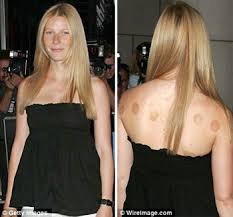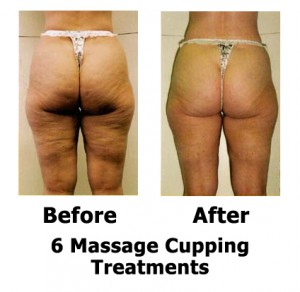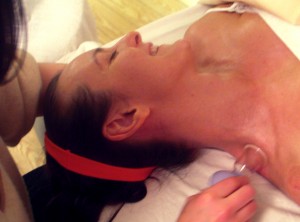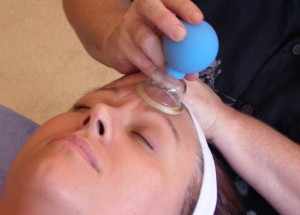 Massage Cupping Therapy
Massage Cupping Therapy
Massage cupping therapy has been around for thousands of years. It originated in China and dates back as far as the Roman times. Over the years, more and more benefits have been identified.
This therapy uses the power of negative pressure to do a variety of positive things, such as loosen and lift connective tissues, increase lymph and blood flow, and release rigid soft tissues. The parasympathetic nervous system is engaged by the pulling action, resulting in deep relaxation that can travel through the entire body.
But what’s with the marks or discolorations that sometimes occur from suction cup therapy?
One of the common and unfortunate misconceptions concerning cupping is the misinterpretation of the discoloration. “Bruising” is caused by impact trauma with breakage of capillaries and reactionary rush of fluids to the damaged area from the tissue compression/injury. There is no compression in properly employed suction cup therapy. Although it is quite common during Stationary Cupping (left static for 5 – 20 minutes) to achieve dramatic ‘marks’ or ‘discolourations’, the less aggressive action of moving the cups, minimizes the intensity and duration of the discolorations. If the client does not want marks but still wants to receive cupping, this is totally possible. Valentine just keeps them lighter and moving, and they leave with zero marks.
Physiologic Benefits of Massage Cupping Therapy
A simple 5-15 minute session of massage cupping helps the body in many ways. The body’s response results in encouraged healing of injuries and an alleviation of the symptoms of many medical conditions. The following are the physiologic benefits of massage cupping therapy:
- Deep tissue release
- Relieves inflammation
- Breaks up congestion and then expels it
- Loosens adhesions
- Stimulates blood and qi movement locally and systemically
- Promotes lymphatic fluid flow and helps to strengthen the immune system
- Helps to balance pH levels and cleans the lymph and blood
- Drains fluids and moves stagnation
- Nervous system sedation
- Stretches connective tissues and muscle
- Pulls blood to the skin
- Dispels damp, cold and wind to treat joint pain, arthritis, stiffness and muscle pain
- Treats fever, depression, excess heat conditions, anxiety and stress
- Removes toxic pathogens
- Promotes nutrient-rich, oxygenated lymph and blood
Condition-Specific Benefits of Massage Cupping Therapy
Massage cupping’s ability to remove toxic pathogens, cleanse the blood and lymph, and strengthen the immune system helps with issues such as cold and flu, congestion, respiratory infections, and other viral/bacterial illnesses.
The relaxing effects caused by the muscle effects, connective tissue effects, and nervous system sedation can be helpful with a variety of painful conditions. Some commonly helped by this therapy include headaches, arthritis, muscle spasms and strains, and other musculoskeletal issues.
This is also helpful for the pain associated with chronic fatigue syndrome, rheumatism, and fibromyalgia.
The overall cleansing and detoxifying effects, along with how this helps the tissues below the skin, can help to heal and alleviate skin issues.

Cellulite is a very common issue that this is used for. Its ability to promote the exit of toxins, loosen the dimpling, and stimulate circulation are all very helpful in reducing cellulite. Other skin issues that can be helped by massage cupping include stretch marks, varicose veins, and wrinkles.
The overall effects of this therapy, specifically the relaxing one, can be helpful for insomnia and anxiety. Many people report that it is easier to fall and stay asleep after just one session. Many also report that their anxious feelings are lessened after just a single session. This therapy is also helpful for depression.
Other conditions that this therapy may benefit include:
 Intercostal neuralgia
Intercostal neuralgia- Abscesses
- Hemorrhoids
- Intestinal disorders
- Sciatica
- High blood pressure and certain other cardiovascular diseases
- Bronchial asthma
- Gynecological disorders
- Congestion
- Certain kidney disorders
- Gastrointestinal symptoms
- Gallbladder disorders
- Certain liver disorders
- Chronic gastic pain
- Menopausal discomforts
- Vertigo


